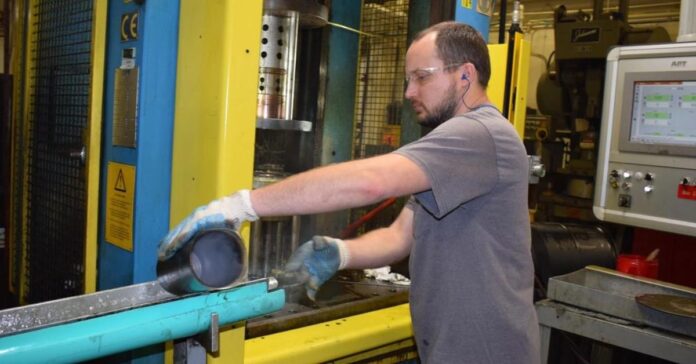Randy Tisor, Crane Army Ammunition Activity
CRANE – After more than seven decades of use, plans to replace Crane Army Ammunition Activity’s pyrotechnics production processes facility are solidifying along a phased planning and construction timeline. The new facility, expected to cost nearly $100M when complete, will be constructed in a mostly vacant and wooded area more than a mile south of its current location.
Planned for completion during FY2031, the pyro complex nests within the Army’s and Army Materiel Command’s 15-year Organic Industrial Base modernization plan and provides more space for pyrotechnic production operations.
“Pyrotechnics, and all its functions, was constructed in the 1940s when the base was developed,” said Lauren Shipman, a CAAA civil engineer working on the project. In the decades since, pyrotechnic operations have grown and expanded, and so have several office and support activities nearby. The new complex, expected to exceed 50,000 feet of floor space, will have plenty of room to expand and offer increased levels of safety buffers over the current location.
“The building will be outfitted with brand new, modern-process equipment,” Shipman added.
Production of visible light and infrared mortar candles, visible light and infrared artillery candles, artillery delays and MK209 .50 caliber blanks, among other items, will continue in the new facility. Additional manufacturing features will include remote operations capabilities, climate-controlled storage and magazines, curing huts and storage for finished items, as well as loading and packing capabilities. Plans for improvements also include lunch and locker space for employees, fire protection and alarm systems, modernized information systems and cyber security measures and a closed-circuit television system.
Milestone phases include a charette, or initial stakeholder meeting, held in December. Shipman explained that the meeting involved product end-users, environmental officials, explosive safety, security officials and other organizations concerned with the production process and how the building will be constructed and laid out.
“The architectural engineering firm came in and did some sessions with (stakeholders) to try to understand the requirements so that they could move to the design level,” she added.
The initial facility design stage is expected to be complete this spring, with follow-on design stages indicating further detail and refinement planned for later dates.
“We are getting ready to award an equipment design in the spring as well,” Shipman stated.
“The new facility will be a process-flow setup for what we do today which will increase efficiency and throughput of our pyro items. Instead of one main building, there will be a primary and secondary facility with the ability to produce two different items concurrently. If the need arises, we could also double production of one item.”
“The new Pyrotechnics complex,” said Col. Franyate Taylor, Crane Army Ammunition Activity commander, “will modernize production capabilities and help to ensure our support to our Army and the Joint Force for decades to follow.”

About CAAA
Crane Army Ammunition Activity produces and provides conventional munitions in support of U.S. Army and Joint Force readiness. It is part of the Joint Munitions Command and the U.S. Army Materiel Command, which include arsenals, depots, activities and ammunition plants. Established in October 1977, it is located on Naval Support Activity Crane.



